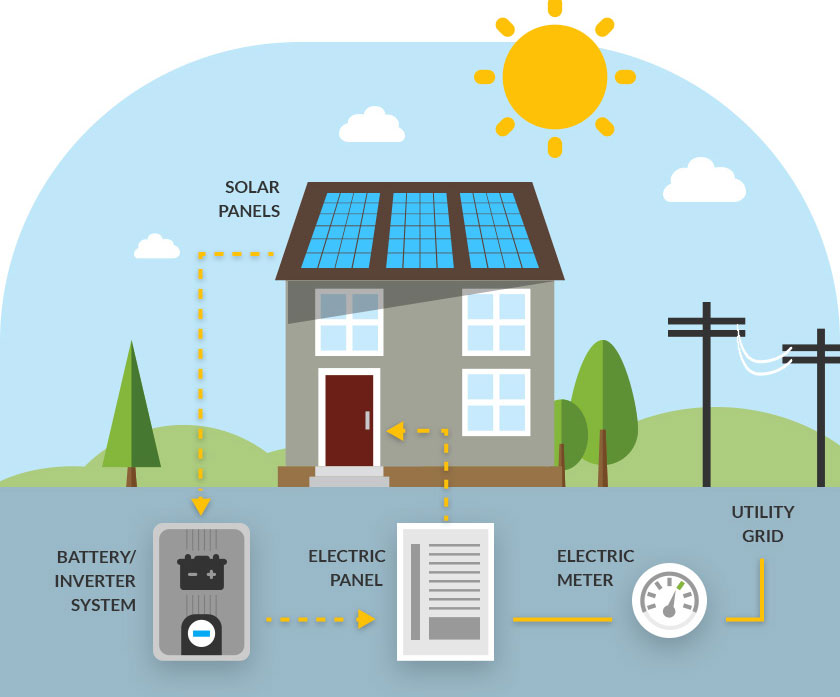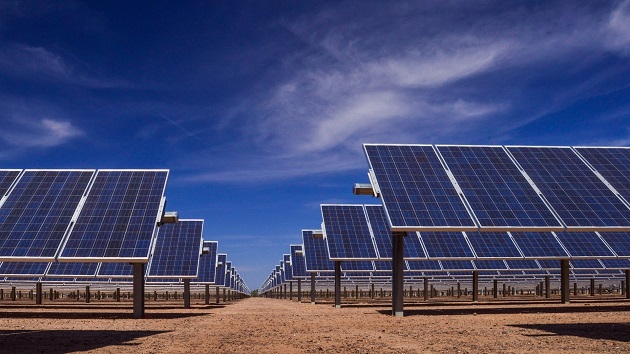The Solar Panel Installation Virginia PDFs
The Solar Panel Installation Virginia PDFs
Blog Article
Virginia Solar Panel Incentives: Lumina Solar Specializes In Supplying Advanced Photovoltaic Solutions For Houses And Companies
History and Establishing
Have you ever questioned how a solar panel business springs from a mere spark of inspiration into a powerhouse of renewable energy? It typically begins with a vision-- one fueled by a mix of development, decision, and a pinch of serendipity. The journey of lots of solar companies mirrors the development of the technology itself: from large, inefficient panels to sleek, high-efficiency marvels harnessing the sun's bounty.
The Early Days
In the late 20th century, when solar power was still a niche idea, pioneers planted seeds for what would end up being an international motion. Envision a little workshop filled with curious engineers, relentlessly try out photovoltaic cells. Their enthusiasm was palpable, frequently driven by a desire to fight environment change and minimize reliance on fossil fuels.
One such anecdote has to do with a founder who, influenced by a camping trip, recognized that even in remote areas, the sun could power important gadgets. This simple observation stimulated a company's objective to equalize access to tidy energy.
Founding Principles

- Development: Constantly pushing the borders of solar technology to enhance performance and toughness.
- Sustainability: Devoting to environment-friendly manufacturing and reducing carbon footprints.
- Accessibility: Making renewable resource solutions budget-friendly and useful for everyday users.
Milestones in Growth
| Year | Key Occasion |
|---|---|
| 1985 | Company founded in a small garage, focusing on research and development. |
| 1995 | Commercial solar panel product released, gaining local attention. |
| 2005 | Expanded to global markets, embracing worldwide renewable resource goals. |
| 2015 | Presented cutting-edge photovoltaic panel technology with enhanced energy conversion. |
Isn't it interesting how these incremental steps, often overlooked, shape the energy landscape today? The photovoltaic panel business story is not practically innovation; it has to do with a ruthless mission for a brighter, cleaner future.

Innovations in Photovoltaic Panel Technologies
Ever seen how some solar panels gleam brighter and last longer? It's not magic; it's the science of photovoltaic effectiveness. Modern photovoltaic panel companies invest greatly in innovations like bifacial cells, which capture sunlight from both sides, read more enhancing energy harvest without broadening roofing space. Have you ever wondered why some panels carry out much better on cloudy days? That's due to advances in thin-film solar technology, which flourishes under diffused light conditions.
Item Variations Tailored to Special Needs
One size never ever fits all. Solar panel providers now use:
- Monocrystalline panels for maximum efficiency and streamlined aesthetic appeals, suitable for space-constrained roofs.
- Polycrystalline panels, which offer a cost-efficient option without compromising too much output.
- Building-integrated photovoltaics (BIPV), merging solar tech flawlessly into architectural aspects like windows and facades.
Picking the best product isn't almost in advance expense; it's about matching your environment, energy goals, and long-term cost savings. For example, homes shaded by trees need panels that excel in low-light situations, something lots of neglect till energy expenses climb up all of a sudden.
Technical Tips for Optimal Selection
- Evaluate the temperature level coefficient-- lower worths suggest panels lose less performance on hot days.
- Look for panels with enhanced anti-reflective finishings to take full advantage of light absorption.
- Consider the panel's service warranty not just for flaws, but for ensured power output over years.
- Don't undervalue the significance of the inverter technology coupled with the panels; it can make or break your system's efficiency.
Beyond Panels: Emerging Patterns
Picture photovoltaic panels that adjust their angle instantly to chase after the sun-- tracking systems are ending up being more accessible, increasing yield significantly. Or solar tiles that blend invisibly into your roofline, changing your home into a silent, self-sufficient power generator. These innovations are improving what a photovoltaic panel company offers-- not simply items, however incorporated energy services.
Market Presence and Global Operations
Ever wonder why some photovoltaic panel business appear to grow up in every corner of the world while others hardly make a ripple? The difference lies not simply in technology however in mastering the art of browsing diverse markets. Expanding worldwide is like planting seeds in different environments-- you must understand each environment's special conditions to flourish.
Take, for circumstances, the complex dance of logistics and supply chain management. Shipping panels halfway across the world isn't simply about range; it has to do with timing, customizeds, tariffs, and adapting to local need variations. A company with robust global operations anticipates these variables, making sure panels get here on schedule without inflating costs. This insight is no small accomplishment and frequently separates industry leaders from followers.
Key Techniques for Expanding Market Presence
- Localized production: Establishing production centers near target markets lowers shipping hold-ups and import intricacies.
- Strategic partnerships: Collaborating with local companies speeds up market penetration and constructs trust.
- Adaptive item design: Tailoring solar panel tech to weather, sun intensity, and infrastructure subtleties improves efficiency and acceptance.
What about the human factor? Photovoltaic panel business operating internationally must reconcile cultural distinctions and regulative subtleties without forgeting their core mission. For instance, what operate in a sun-drenched desert may fail in a damp coastal area. In some cases, the most ingenious service is simply listening-- soaking up local insights to fine-tune technology and method.
Specialists frequently encourage a phased rollout rather than a shotgun growth. Why run the risk of overextension when measured growth builds sustainable momentum? Scaling carefully indicates balancing ambition with functional durability - Residential Solar Panels Virginia. In the race for sustainable energy supremacy, patience can be as important as speed.
Ecological Impact and Sustainability Practices
When photovoltaic panels initially emerged, lots of assumed they carried absolutely no environmental baggage. The reality is more nuanced. The production of photovoltaic cells involves rare earth metals and energy-intensive procedures, which can leave a sizable carbon footprint before the panels even reach rooftops. The real environmental cost depends heavily on the sustainability practices employed by the solar panel company throughout the lifecycle of their products.
How frequently do we stop briefly to consider what takes place to solar panels at the end of their useful life? Unlike batteries or electronics, photovoltaic panels can last 25-30 years, however disposal and recycling pathways stay underdeveloped in lots of regions. A business dedicated to lowering environmental damage will have a robust plan for recycling photovoltaic materials, salvaging valuable silicon, glass, and metals to avoid landfill accumulation.
Secret Sustainability Methods
- Making use of low-impact manufacturing methods that decrease water and energy usage.
- Implementing closed-loop systems to recycle production waste back into brand-new panels.
- Engaging in transparent supply chain audits to ensure ethical sourcing of raw materials.
- Creating panels for much easier disassembly to help future recycling efforts.
It deserves keeping in mind that some solar companies have pioneered ingenious approaches, such as incorporating naturally degradable components or using less hazardous chemicals throughout fabrication. This not just decreases environmental pressure but also sets a precedent for the market. The question stays: can the solar market truly pivot towards a circular economy model without sacrificing performance or cost?
Expert Tips for Assessing Sustainability
- Inquire about the company's commitment to carbon-neutral production and whether they balance out emissions.
- Investigate if they partner with certified recycling centers devoted to photovoltaic panel waste.
- Search for transparency reports detailing environmental effects and sustainability goals.
- Consider the longevity and warranty of panels as an indirect procedure of resource performance.
In the end, going with solar power ought to mean more than simply slashing electrical energy costs; it's about nurturing a future where energy is harvested responsibly and waste is attentively managed. Photovoltaic panel companies that accept this philosophy not just brighten homes however also cast a brighter light on sustainable development.
Report this page